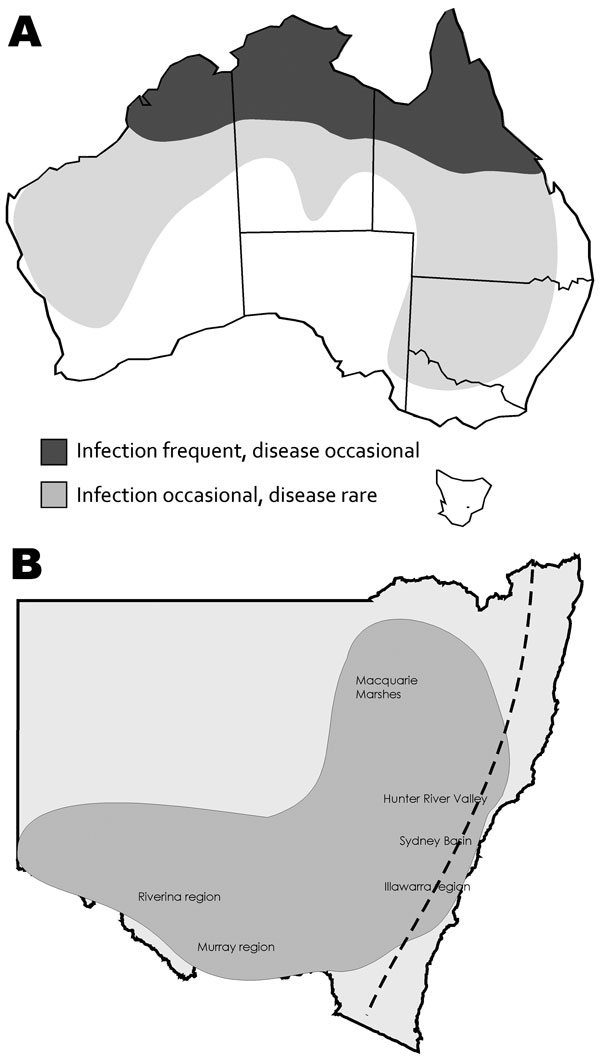Volume 18, Number 5—May 2012
Research
Characterization of Virulent West Nile Virus Kunjin Strain, Australia, 2011
Figure 1

Figure 1. . . Known distribution of West Nile virus infection and disease caused by Kunjin strain (A) and distribution of encephalitis cases among equids (B), New South Wales, Australia, 2011. Dashed line indicates the Great Dividing Range.
1These authors contributed equally to the major technical aspects of this research.
2These authors served as joint senior authors.
Page created: April 12, 2012
Page updated: April 12, 2012
Page reviewed: April 12, 2012
The conclusions, findings, and opinions expressed by authors contributing to this journal do not necessarily reflect the official position of the U.S. Department of Health and Human Services, the Public Health Service, the Centers for Disease Control and Prevention, or the authors' affiliated institutions. Use of trade names is for identification only and does not imply endorsement by any of the groups named above.